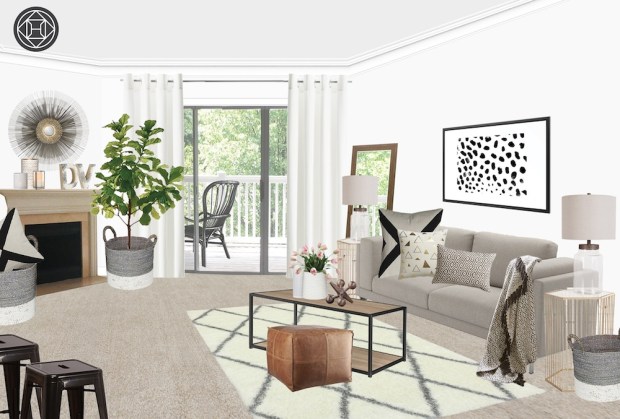Havenly’s Professional Touch For Amateur Efforts

While many things could be in the running for the title “plague of the modern era,” one of the lighter candidates could certainly be the “Pinterest/Instagram fail.” For those unfamiliar with the term, it refers to when a normal person sees some hyper-crafty, hyper-clever thing pinned or posted on social media that they then attempt to try at home, usually with less-than-super effects.
As it turns out, that picture-perfect, rainbow-colored cake that seemed so simple on the web is actually more likely to turn into a multi-colored mess in a pan when done by a mere mortal as opposed to a professional cake decorator.
An army of DIYers — whose failures were, in some ways, more spectacular than the things they were imitating — will proudly (or shamefacedly) attest to the fact that picture-perfect aesthetics are best left in the hands of the professionals. Pinterest is a great place for normal people to get good ideas on decorative throw pillows, but once one gets to the advanced class about tiling their whole floor in multi-colored pennies (no, we did not make that up), it behooves them to ask first, “Do I have any idea what I’m doing?”
The answer to that question, as it turns out, is yes far more often than not, which is why at least 1 percent of the internet is now made up of pictures of DIY projects gone horribly and completely pear-shaped.
One could, of course, always get better at being a highly crafty interior design expert, but that takes a lot of time, and the reality is that not everyone is suddenly going to find out that they are secretly Joanna Gaines with a hot glue gun in their hands and a $100 budget at a thrift shop.
But luckily, for those of us who lack that natural Pinterest-ready talent on our own, there is Havenly, which offers interior designers on-demand for those that are looking to develop a look with a bit of artistic vision on loan.
Now, of course, interior designers/decorators aren’t a new creation of the digital age — that has always been a go-to for those with the money for them. But that money can stretch from the hundreds into the thousands fairly quickly. Havenly — an online platform that connects those in need of design help with those with the capacity to offer it — makes customers two good deals at once. The first is simply pricing — the cost is only $79 per room to get an an interior designer of one’s own, two custom concept boards and product suggestions.
Step up that price to $199 per room, and you get all of the above, a room placement visualization and some extra design time. Customers also get $50 off their next visit, which leads to Havenly’s second big draw — it lets (and encourages) consumers to do one room at a time.
To use the service, customers fill out a style profile, upload some photos and wait for the home design magic to begin.
Cofounder Emily Motayed noted: “We seek our biggest interest among millennial customers, especially of late those that are moving into their first purchase homes that are really looking to step up their interior spaces.”
Once it comes time to start buying products, the prices, of course, vary quite greatly. For those starting out with an empty room, a consumer can expect to spend in the neighborhood of $3,000–$4,000; those who are freshening up an existing space with some odds and ends have a much less expensive experience.
“Committing to a complete redesign is not always something everyone has the time and budget for, so we are making the virtual experience so much more personal and exciting by allowing ongoing access to a designer,” said Lee Mayer, CEO and cofounder of Havenly. “We pay close attention to our customers’ needs and understand the importance of having real-time access to a design expert for quick advice and decor tips.”
Havenly has had a big year. The firm reported growth in the range of 30 percent and users signing on by the tens of thousands each month. More importantly and perhaps more encouragingly, however, is the fact that Havenly customers keep coming back — about 20 percent return to decorate more rooms with the help of professionals.
Will it be enough to disrupt the world of interior design, and will it cut in on the internet’s supply of DIY home improvement projects gone horribly, horribly wrong? We doubt it, and we hope not.
But Havenly might have the key to creating the right commerce context for the wired upper-middle class homeowner with big ideas looking for advice on how to execute. It’ll be well worth watching next year.
